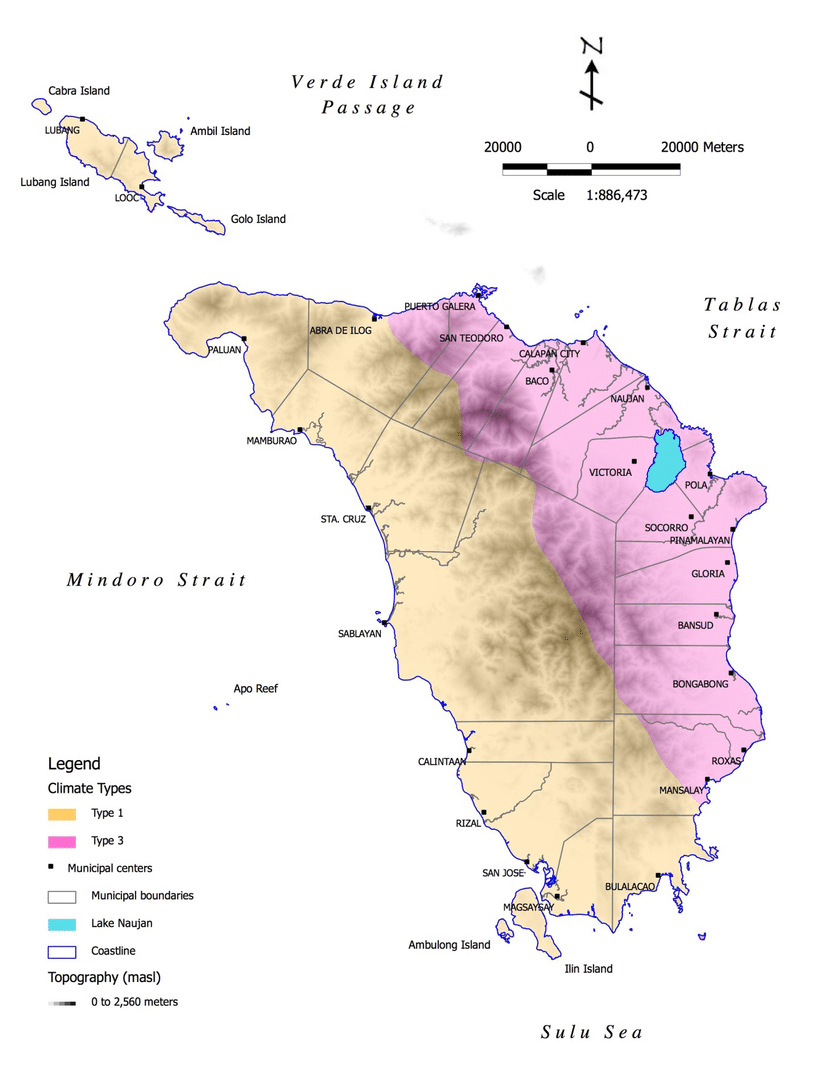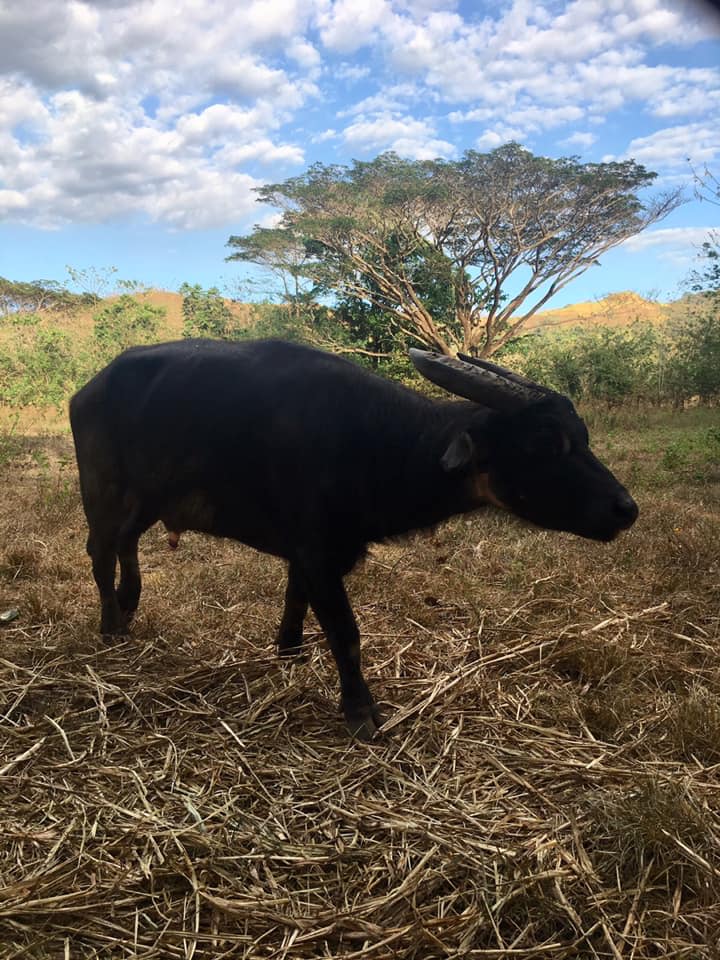From here, I hope that you find yourself there in the mountains of Iglit-Baco. Listen to what these people have to say because the tamaraws couldn’t speak.
Exploring Occidental Mindoro
Eco Explorations envisions to create sustainable eco-tourism that contributes to communities it involves with. It was in December 2018 when the community organization announced its first exploration up in the mountains of Iglit-Baco, Occidental Mindoro. We signed with the mere purpose of taking a chance on sighting the tamaraws of the island endemic to the Philippines, a dream that fulfills my childhood Sibika at Kultura textbook experience in the elementary school. This early, I must say, our expectations weren’t met.
In my case, Mindoro is the island I’ll be visiting outside the island of Luzon for the first time. No readings were done, no photos were viewed, I merely relied on the EcoEx’s presentation which focused on the Mts. Iglit-Baco exploration. This is just to let the island surprise me on its own. But, man, was I damned the moment the sun kissed the ground. Clear roads unfold the best sights of grassy agricultural lands and rich pastures. Mountains are shadowing giants, we can’t count how many peaks were there. I was literally somewhere else. Still though, I must remind you, our expectations weren’t met.
How to get there
The Exploration
Day 1: Tamaraw Gene Pool Farm, Minoot, Rizal, Occidental Mindoro
Almost 2 hours from the town of San Jose is home to the lone bred tamaraw (Bubalus mindorensis) in captivity, Kalibasib (Kalikasan Bagong Sibol) famously known as “Kali”, among other rescued animals. Kali is 19 years old. Blind in the right eye, experts say that the recorded life span of tamaraws ranges from 20 to 25 years which warns us that our Kali might be nearing it’s time. Although, with high hopes, he could still break the record.
By reaching the Gene Pool, we knew that this exploration is going to rouse us some priceless experiences. The session started by the introduction of participating individuals which includes; economists, water experts, a physician, botanists and students of life. You’ll immediately notice the grit among their faces, pure enthusiasm is vibrating as they speak.
Tamaraw Conservation Program’s (DENR-TCP) June Pineda and Mindoro Biodiversity Conservation Foundation, Inc.’s (MBCFI) Geoff Tabaranza shared some vast information about Mindoro, their work and their advocacies in their respective conservation programs. Ms. June, TCP’s head, presented some quite fascinating facts and stories about the TCP. She is also a local to the island of Mindoro sharing that she’s been involved with the conservation of Mindoro’s biodiversity at the age of 17. Such sincerity is felt when she talks about her experiences. Mr. Geoff, on the other hand, is representing MBCFI. He is also a conservationist who specializes birds. During the hike, this is noticeable as he can identify the types of birds from afar and by only listening to their sounds.
We also met the rangers assigned at the Gene Pool, very warm welcoming people. Kuya Nonoy, the lead, told us a harrowing story how he lost one finger when a group of visitors requested that a rescued turtle be presented to them. Kuya Nonoy then crossed the fence and upon jumping back out the cage, he heard a snap. His index finger jumped out of his hand before he lands on the ground. He lifted his hand and showed his four fingers with a smile. We were reminded, rescue centers are not zoos. That our rescue workers are working for the animals and not to satisfy our curiosities.
In the afternoon, a few walks from the cottage, is home of Kali and other rescued animals’ area. One ranger was calling Kali and from the bushes comes a familiar figure walking slowly to our reach. The way Kali walked towards us was still vivid. It was as if our group was waiting for a VIP, fascinated and overjoyed. I, on the other hand, was at first speechless. The image in my old Sibika at Kultura textbook has come to life.
The day was ended by a hitch while the sun goes down to the west. We were stoked – the passengers up on the jeepney roof. Trees slapped us, the sunset kissed us, and the road was a calm sheet of asphalt as the stars slowly showed up the 6:00 p.m. skies. I did not sign up for such beauty, I knew so little that I was beyond smitten with the scene.
Day 2: Station 1, Poypoy, Calintaan, Occidental Mindoro
Jumping off to our main point for this exploration, the group hitched for another 2 hours (6:00 8:00 a.m.) to the town of Calintaan. Calintaan is ituated by the foot of Mts. Iglit-Baco, Station 1 in Poypoy and is a place of preparation for hikers going to an approximately 6-hour venture. Please note though, secure your permits before hiking in the area. Mts. Iglit-Baco is an important land of 75,445 hectares, home to rich biodiversity and remember, it is a protected area. Be conscious and cautious by respecting rules and the authorities in-charge. This is where it was slowly instilling in me: exploring mountains should not be focused (alone) on reaching the summits, it is instead being intentional on what we want to learn in the process.
The trail for first timers is quite rough but manageable with nice people who wait when we’re running out of breath during assaults. EcoEx’s leads did not fail in their job to guide us – particularly speaking for the first timers. Rivers were crossed, birds of various colors were seen along the mixed trails of highs and lows and from here, we’ve already been meeting Mangyan brothers and sisters who are surprisingly happy folks. You’ll know this through the way they respond with such bright eyes saying, “Walang anuman.” or “Magandang umaga din po.”
Around 2:00 p.m., our sore bodies made it to the 2nd station. Our stop for the day where we heard some of the sincerest, truest and bravest stories from park rangers and wardens. A series of fun and terrifying stuff from the people who are risking their lives to protect and save the last number of tamaraws.
Day 3: Station 3, Mt. Magawang: Inside Mts. Iglit-Baco
Mt. Magawang for a Kapampangan like me is a never-heard place.
2 hours away from the 2nd Station, we had to ramble our way through the 6:00 a.m. breeze. My allergic rhinitis was doomed by the cold because I wasn’t geared with any mask. What’s more challenging are the final slopes to Mt. Magawang so train for some long walks. Trail is rough but we never imagined a grassland that’s just as beautiful as Mts. Iglit-Baco. Its charm was so zoning out, I wanted to name my child “Iglit”.
By 9:00 a.m., including mid-trail rests, our group reached the 3rd station. There were 2 vantage points in Mt. Magawang, one reaches 944 MASL and the other at 1000+ MASL – steeper, higher but worth the fear. We were also welcomed by the rangers-prepared breakfast. Their tortang talong is better than my grandma’s – which I used to consider best before theirs.
In the area, there was also a balcony set for tamaraw spotting. Imagine this: 800+ MASL, you are surrounded by giant green mountains and grassland spaces. The wind is cold even while the sun’s light out in bright clear skies. So we moved our sleeping bags, laid our sore bodies on the concrete floor of the balcony and took the best nap of our lives.
We woke up for another storytelling session, best thing in every stop. Kuya Cocoy is the leader of the 3rd Station. Consider him one of the funniest rangers who likes to speak with actions and laughs right after telling everyone his jokes.
All we did in the afternoon of Day 3 is watch out for as many tamaraws as we can. I almost didn’t want to go home. EcoEx, TCP and MBCFI did a remarkable job into bringing us in the mountains of Iglit-Baco. The place of a fulfilled childhood dream and learned stories of heroes who are almost never-heard.
Beyond the bliss
One of the most arresting stories I’ve heard was in this exploration. We’ve learned that there are some nights when stations were attacked by poachers. Our park rangers have no guns neither do they have any weapon to combat these people. Sometimes, their only option is to hide but I didn’t hear any part where they ran away from their posts. We are talking about bullets through the walls and how they had to sleep on the floor after shots were fired. We are talking about bullets placed in their kitchenwares as threats after a long day of monitoring. Finally, we are talking about a story of 25 people risking their lives despite relying on contracts for 32 years – utmost.
Our goal when we signed up is to summit Mt. Iglit and see the tamaraws. Here, I must finally say, our expectations were broken. We’ve seen, heard and felt more than what we anticipated. Our 40L pack was reduced to 38L leaving behind our mat and tent to Mt. Magawang. We told them, we’ll come back with new pals. So when that time comes, we jokingly said, we already have a place to sleep in.
I hope I have the capability to tell everything. To tell you the story in a vivid manner. From here, I hope that you find yourself there in the mountains of Iglit-Baco. Listen to what these people has to say because the tamaraws couldn’t speak. The noble job these people have embraced is conserve our land and brave the wilder humans.

















Comment (0)